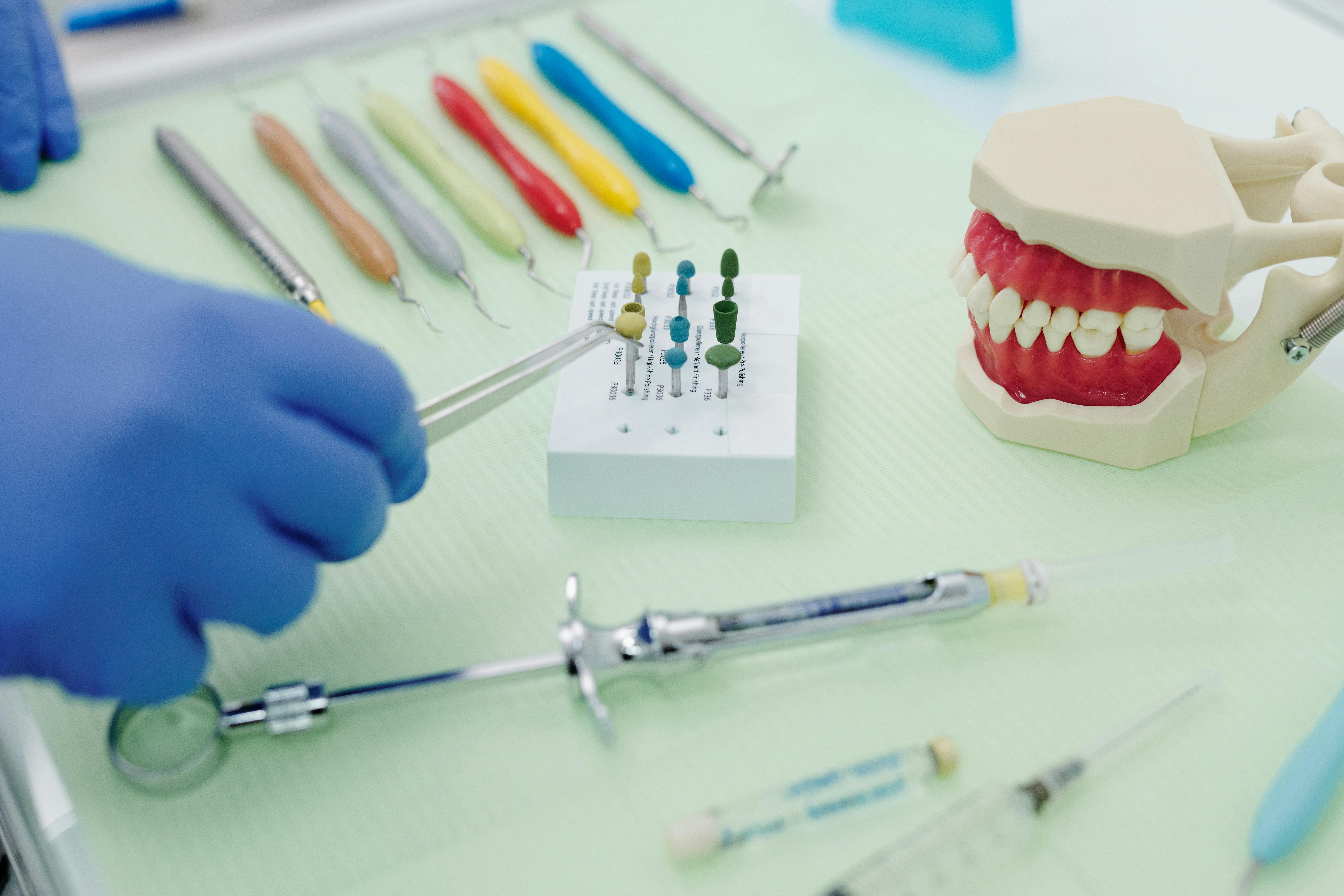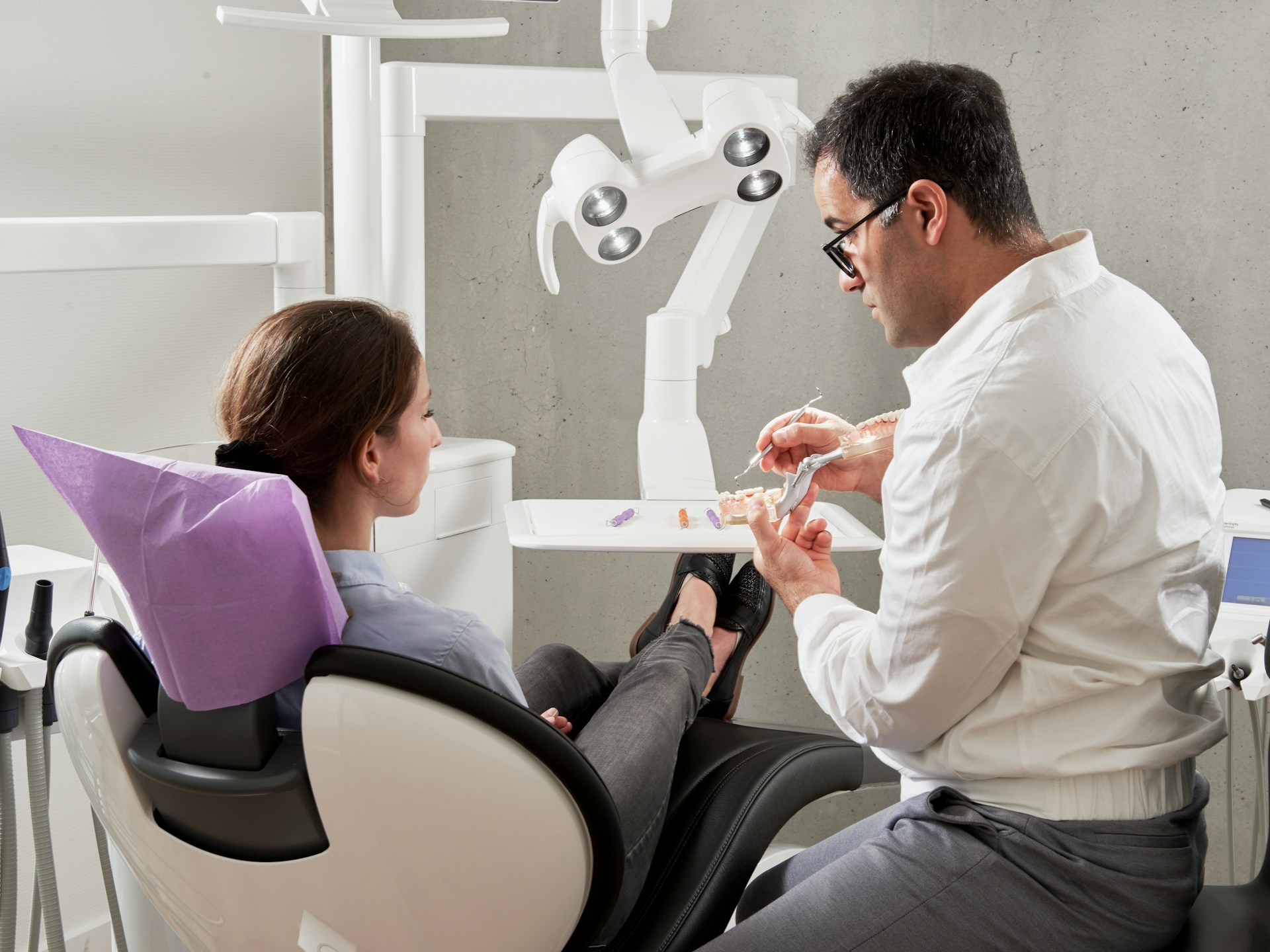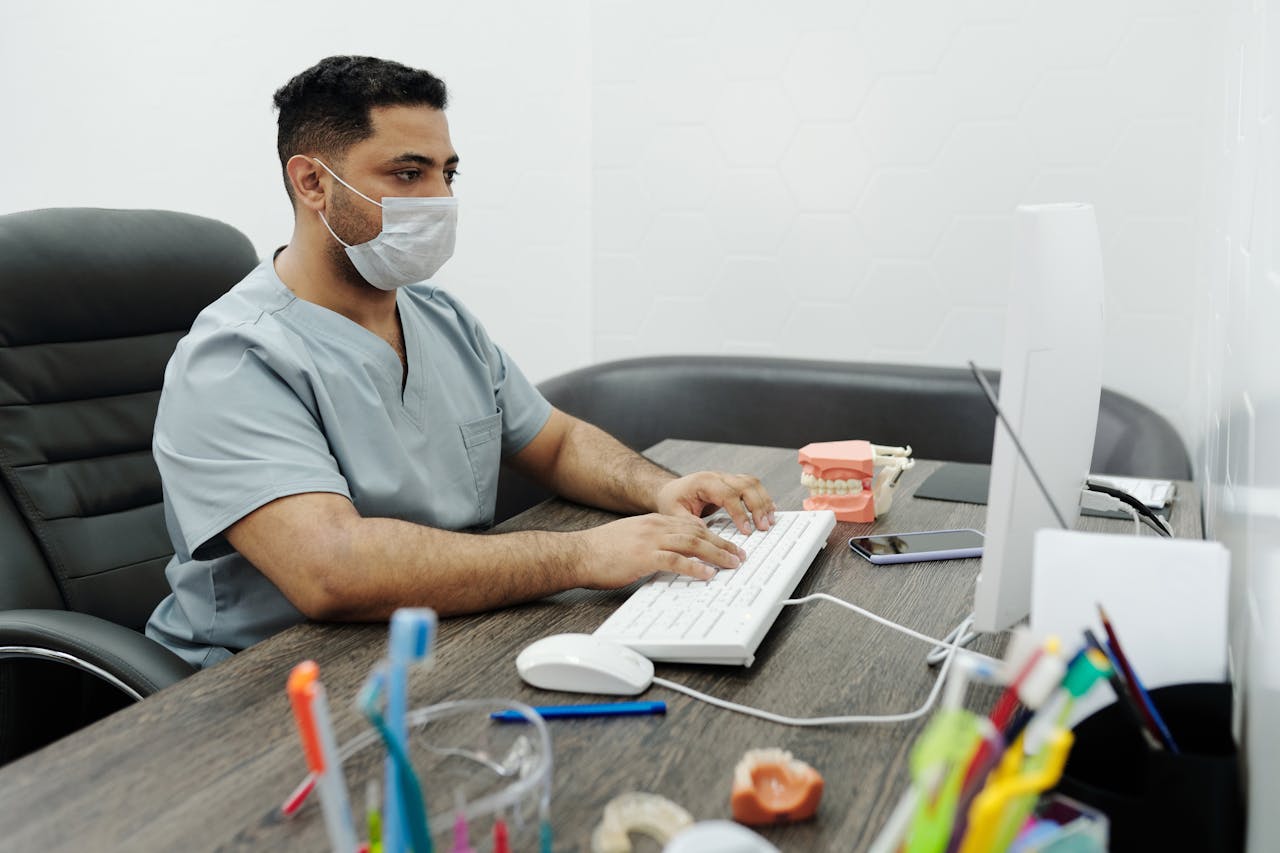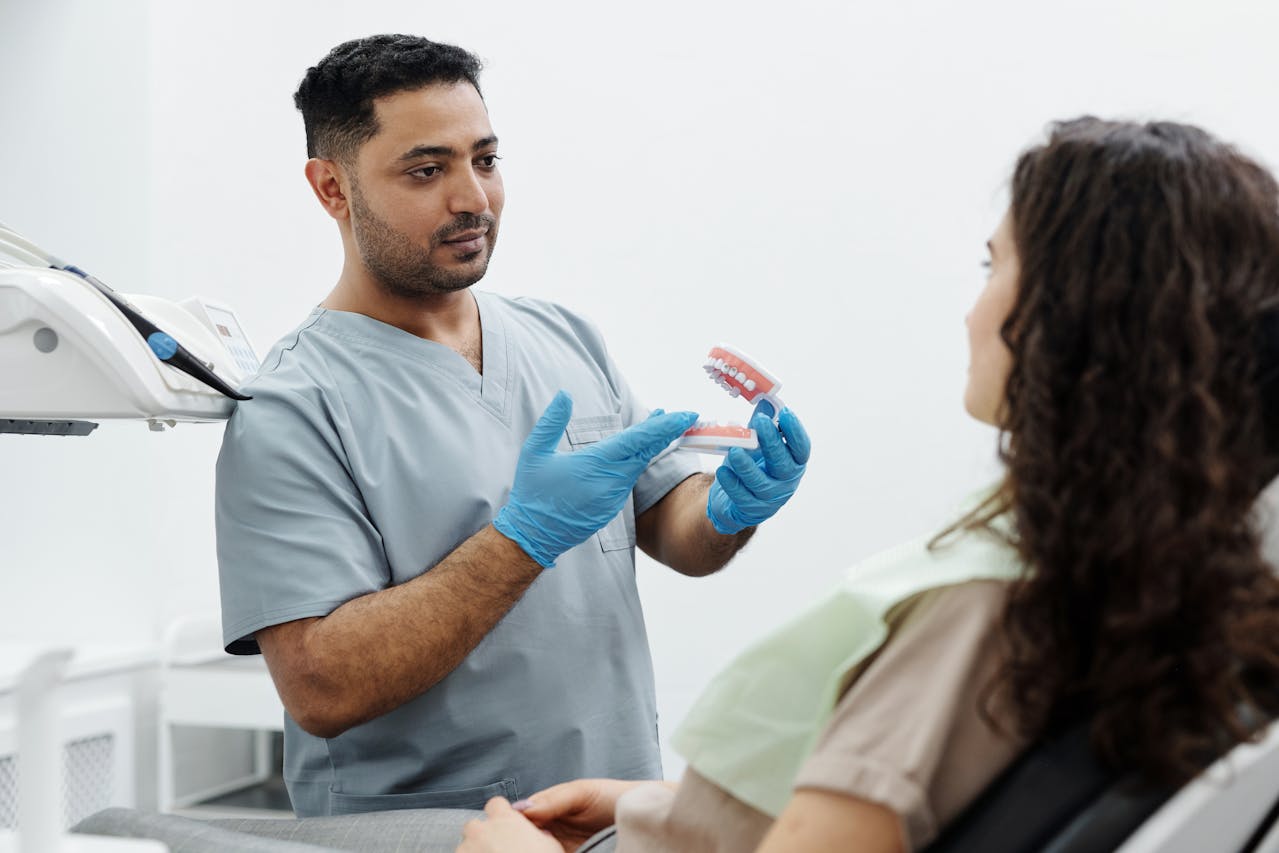How Much Do Dental Clinics Make in California – 2025

Dental clinics in California continue to be profitable ventures in 2025, with various factors influencing their earning potential. The average dentist in California earns between $192,486 and $265,057 annually, while those in private practice can make significantly more - up to $389,001 per year. California dental clinics typically generate 11% higher revenue than the national average, with top performers reporting earnings of up to $453,862 annually.
Recent trends in the dental industry show changing salary patterns since 2022, when income satisfaction reached its peak due to pandemic-related inflation and staffing shortages. Dental professionals now face a more stabilized market, though California remains one of the most lucrative states for dental practice ownership due to high demand and population density.
Key Takeaways
- California dentists earn about 11% above the national average with private practice owners seeing the highest earnings.
- Dental clinics with automated scheduling and insurance verification systems maximize chair time and increase revenue.
- 24/7 patient communication capabilities can significantly boost a clinic's annual revenue through improved appointment scheduling.
AI Voice Agent Benefits For Dental Practices
Modern dental practices are discovering that AI voice agents can dramatically improve their operations and bottom line. These virtual assistants handle patient calls efficiently while cutting costs and improving the patient experience.
24×7 Virtual Receptionist Highlights
AI voice agents serve as round-the-clock receptionists for dental practices, ensuring no patient call goes unanswered regardless of the time. Unlike human staff, these AI-powered communication systems never take breaks, call in sick, or need time off.
This 24/7 availability means patients can schedule appointments, ask questions about services, or address urgent concerns at any hour. For practices in competitive markets like California, this accessibility creates a significant advantage.
The technology handles routine tasks such as:
- Appointment scheduling and confirmations
- Insurance verification questions
- Basic dental care inquiries
- Directions to the office
Many dental practices report improved patient satisfaction scores after implementing AI receptionists. Patients appreciate getting immediate responses rather than leaving voicemails or waiting for callbacks.
Reducing Missed Calls At Dental Clinics
Missed calls directly translate to missed revenue opportunities for dental practices. Each unanswered call potentially represents a new patient relationship worth thousands in lifetime value.
Research shows that dental offices miss up to 30% of incoming calls during busy periods. AI voice agents eliminate this problem by handling multiple calls simultaneously, ensuring every patient interaction is captured.
The cost benefits for dental clinics become evident when examining conversion rates. Practices using AI voice technology report:
Metric Before AI After AI
Missed Calls 25-30% <5%
New Patient Bookings 62% 83%
Staff Stress Level High Moderate
This improved call handling efficiency creates a more positive practice culture. Staff no longer feel overwhelmed by constant phone interruptions while focusing on in-office patients.
Freeing Up Front-Desk Teams
Perhaps the most significant benefit is how AI voice agents transform the work environment for front desk staff. By handling routine calls, these systems free team members to focus on higher-value activities.
Front desk personnel can instead:
- Provide personalized attention to patients in the office
- Process insurance claims more efficiently
- Focus on collections and financial arrangements
- Improve the in-office patient experience
This shift reduces burnout among administrative staff. One California dental group reported a 34% decrease in front desk turnover after implementing AI voice technology.
Staff members also report greater job satisfaction when freed from constant phone interruptions. They can complete tasks without disruption, leading to fewer errors in scheduling and billing.
The technology integration allows practices to operate with leaner administrative teams, potentially saving $40,000-60,000 annually in staff costs while improving service quality.
Call Forwarding And SMS Integration For Dentists
Modern communication tools can significantly impact a dental clinic's revenue and patient satisfaction. Dental practices in California are increasingly adopting phone systems with advanced features to streamline operations and improve accessibility.
Improving Patient Communication
Dental practices can boost patient engagement through VoIP solutions for dentists that offer call forwarding and SMS integration. These systems allow staff to communicate with patients even when the office is closed.
Call forwarding ensures that important calls are never missed. Dentists can route calls to cell phones or other team members during lunch breaks or after hours. This accessibility makes patients feel valued and prevents losing potential new patients.
SMS integration enables quick communication for appointment reminders, follow-ups, and treatment instructions. Patients appreciate text messages over phone calls for routine matters.
The ability to send automated texts reduces no-shows by up to 30% according to industry data. This directly impacts revenue since each missed appointment costs a practice hundreds of dollars.
Streamlining Dental Appointment Booking
Effective phone systems help convert more calls into booked appointments. Systems like VoiceStack have helped dental clinics increase booking rates to 85% compared to the usual 50% seen with traditional methods.
Integration with practice management software creates a seamless booking experience. When calls come in, staff can instantly access patient records and available appointment slots.
Features to consider include:
- Automatic call distribution
- Click-to-call functionality
- Text message appointment confirmations
- Custom call routing based on inquiry type
Multi-location practices benefit greatly from these technologies. A centralized system allows appointment scheduling across all locations, ensuring balanced patient distribution.
Dental practices can save time by automating routine tasks. Staff spends less time on the phone and more time focusing on in-office patient care, improving both efficiency and the quality of service.
Conversational AI For Dental Patient Interaction
Dental clinics in California are increasingly adopting AI technology to streamline patient communications and improve operational efficiency, directly impacting their bottom line.
Natural Language Experience For Patients
Modern dental practices are seeing significant benefits from dental conversational AI systems that handle patient interactions using natural language processing. These systems understand patient queries about appointments, procedures, and billing without the robotic feel of older technologies.
Patients can communicate through text messages, website chat, or voice calls in their normal speaking style. The AI recognizes context, emotion, and intent—making interactions feel more human.
For dental offices, this means:
- 24/7 availability without additional staff costs
- Reduced phone traffic for front desk staff
- Higher patient satisfaction scores
- More efficient scheduling
Most systems integrate with existing practice management software, allowing seamless transfer of information into patient records. This technology typically pays for itself within 6-12 months through reduced staffing needs and improved appointment booking rates.
Triage Of Dental Needs With AI
AI systems now effectively prioritize patient dental concerns, routing urgent cases appropriately while managing routine inquiries automatically. This intelligent triage capability helps California dental practices optimize their schedule and maximize revenue.
The technology evaluates patient descriptions using clinical algorithms to determine:
- Emergency situations requiring same-day care
- Urgent conditions needing prompt attention
- Routine matters that can be scheduled normally
By 2025, these AI triage systems are projected to reduce no-shows by 15-20% through better matching of patient needs to appointment types and automated confirmation processes.
Dental practices report saving 8-12 front desk hours weekly once these systems are fully implemented. The financial impact is substantial—practices typically see a $3,000-5,000 monthly revenue increase from improved scheduling efficiency and emergency case capture.
Real-Time Chair Availability And Scheduling
Efficient chair management directly impacts a dental clinic's bottom line in California, where practices can increase revenue by 15-25% through optimized scheduling systems.
Syncing With Dental Practice Management Systems
Modern dental practices need seamless integration between scheduling tools and practice management software. This connection eliminates double-booking errors and creates a unified workflow for staff.
Dental appointment scheduling systems that sync with management software can reduce administrative time by up to 70%. Staff no longer need to manually update multiple platforms when appointments change.
Key benefits include:
- Automatic updates across all systems when changes occur
- Real-time visibility of chair availability across the entire practice
- Reduced scheduling conflicts and administrative errors
- Better utilization of hygienist and dentist time
Some systems offer analytics that identify scheduling patterns, helping clinics maximize the number of patients seen per day based on procedure types and provider availability.
Instant Appointment Confirmation
Immediate confirmation technology has become essential for competitive dental practices in California's busy market. Patients increasingly expect the same convenience from healthcare providers that they get from other services.
The best dental scheduling software offers instant confirmation features that improve patient experience while reducing no-shows by up to 30%. Automated text and email confirmations have become standard.
Smart scheduling tools now offer:
- Two-way texting for quick patient responses
- Automated reminder sequences (3 days, 1 day, 2 hours before)
- Wait-list management for filling last-minute cancellations
- Self-scheduling options through practice websites
Practices using predictive scheduling insights can optimize chair utilization based on historical data, ensuring maximum productivity during peak hours while maintaining flexibility for emergency appointments.
Automating Insurance Rule Checks In Clinics
Dental clinics in California can save significant money by implementing automation for insurance processes. Modern AI solutions reduce staff workload while improving accuracy and speeding up reimbursements.
Handling Insurance Eligibility Seamlessly
Insurance verification is one of the most time-consuming tasks for dental front offices. Manual verification can take 15-20 minutes per patient, costing practices thousands in labor hours annually. By automating insurance verification processes, California dental clinics can save over $100,000 per year.
AI-powered tools now integrate with practice management systems to verify:
- Coverage limits
- Deductible status
- Frequency limitations
- PPO participation status
These systems can process verifications 24/7, allowing staff to focus on patient care rather than administrative tasks. For large practices handling 500+ patients monthly, this automation can reduce staffing needs by 1-2 full-time positions.
Minimizing Scheduling Errors
Scheduling errors linked to insurance misunderstandings cost California dental practices an average of $43,000 annually in lost revenue. Automated systems cross-check appointment types against insurance portal requirements to prevent these costly mistakes.
Key benefits include:
- Reduced claim rejections: Automatic verification before appointments cuts rejection rates by up to 30%
- Faster credentialing: Automated tracking of PPO credentialing status and renewal requirements
- Better patient communication: Automated systems can provide patients with accurate cost estimates before treatment
Modern dental practice management software now flags potential insurance conflicts at scheduling time, allowing front desk staff to address issues before the patient arrives. This proactive approach improves patient satisfaction while protecting practice revenue.
Revenue Growth From 24×7 Dental Call Coverage
Implementing round-the-clock call coverage helps dental practices in California capture significant additional revenue that would otherwise be lost. Recent data shows dental practices can increase their booking rates from as low as 10% to over 60% with proper call management systems.
Capturing Lost Revenue After Hours
Many dental practices in California lose potential income when calls go unanswered outside regular business hours. Studies show that up to 40% of new patient calls occur after the office closes. These missed opportunities translate directly to lost revenue.
One practice in California implemented 24/7 call coverage and recovered approximately $35,000 in lost treatments within just one month. This dramatic improvement demonstrates the immediate financial impact of capturing after-hours inquiries.
Dental practices using call management systems report higher levels of income satisfaction compared to those relying only on voicemail systems. The difference can amount to $7,500-$15,000 in monthly revenue for mid-sized practices.
Key benefits include:
- Converting emergency calls into immediate appointments
- Capturing patients who might otherwise choose competitors
- Building patient loyalty through responsive service
Maximizing Booked Appointments
Effective 24/7 call coverage does more than just answer phones—it actively converts inquiries into booked appointments. California dental practices using advanced call systems have seen booking rates increase from 40% to over 90%.
The quality of call handling makes a significant difference. Trained representatives who understand dental terminology and procedures can better address patient concerns and overcome objections.
Modern AI-powered call systems can identify which calls represent the highest value opportunities. This helps practices prioritize follow-up for potential high-revenue procedures like implants or cosmetic dentistry.
Practices implementing comprehensive call strategies report higher pay for dentists and staff due to increased patient volume. The 2025 Dental Industry Outlook indicates 60% of practices experienced production growth despite economic challenges when utilizing effective patient communication systems.
Encouragement To Explore Arini For Dentists
California dental practices looking to boost profitability should consider innovative technology solutions. Arini offers a compelling option for busy clinics.
This AI-powered receptionist for dentists answers calls 24/7, schedules appointments, and helps drive revenue. In today's competitive market, such tools can provide a significant advantage.
Dental front desks are often overwhelmed, with staff spending 80% of their time on phones. Despite this effort, about 35% of calls go unanswered.
Key Benefits of Arini:
- 24/7 call answering capability
- Automated appointment scheduling
- Improved patient communication
- Cost-effective solution
The system integrates easily with existing practice management software. This makes implementation relatively straightforward for most practices.
Many dental practices increase profitability by focusing on better patient communication. Arini supports this goal by ensuring no patient call goes unanswered.
For California dental clinics seeking to maximize revenue in 2025, exploring AI reception options makes financial sense. The reduced workload on staff allows them to focus on in-office patient care.
Dental professionals report that automated systems help maintain consistent patient scheduling. This leads to fewer gaps in the daily calendar and more predictable revenue.
Frequently Asked Questions
California dental clinics generate varying revenues based on location, specialization, and practice type. Dentist earnings in the state exceed national averages, with significant differences between employee dentists and practice owners.
What is the average monthly revenue for dental clinics in California as of 2025?
Dental clinics in California typically generate between $75,000 and $120,000 in monthly revenue. This translates to approximately $900,000 to $1.4 million annually.
Location heavily influences these figures, with practices in Los Angeles and San Francisco often reaching the higher end of this range.
Specialized practices focusing on cosmetic dentistry or orthodontics tend to report higher monthly revenues than general dentistry clinics.
What is the typical hourly earnings for dentists employed in California clinics in 2025?
Dentists in California earn approximately $130 per hour on average. This rate places California dentist hourly earnings about 11% above the national average.
Experienced dentists in high-demand areas can command $150-200 per hour, particularly those with specialized skills or extensive experience.
Dental clinics typically compensate associate dentists through production-based models where the dentist receives 25-35% of the revenue they generate.
How does entry-level dentist compensation in California compare as of 2025?
Entry-level dentists in California earn between $140,000 and $175,000 annually. This starting compensation exceeds entry-level positions in most other states by 5-15%.
Recent graduates working in underserved areas may qualify for loan repayment programs that effectively increase their total compensation package.
Many new dentists begin with guaranteed minimum salaries for the first 6-12 months before transitioning to production-based compensation models.
What is the expected salary range for dental hygienists in California for the year 2025?
Dental hygienists in California earn between $98,000 and $120,000 annually. This places California dental hygienist pay approximately 20% above the national average.
Hourly wages for dental hygienists typically range from $47 to $58, with variations based on experience and practice location.
The dental hygienist compensation trends show continued growth, influenced by California's healthcare worker minimum wage requirements.
What are the salary prospects for dentist practice owners in California during 2025?
Dentist practice owners in California earn between $275,000 and $450,000 annually. This represents the net income after practice expenses but before personal tax obligations.
Multi-location practice owners or those with specialties like implantology can see earnings exceed $600,000 annually.
Practice owners in suburban areas often report higher profit margins than those in major metropolitan areas due to lower overhead costs.
What is the financial outlook for orthodontists working in California for the year 2025?
Orthodontists in California earn between $280,000 and $400,000 annually, with top performers reaching $550,000 or more.
Specialists implementing clear aligner technology and digital workflow solutions report higher profit margins and increased patient volume.
Orthodontists in exclusive practices typically earn 15-20% more than those working in multi-specialty settings.









